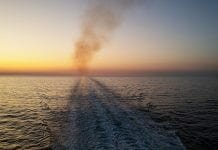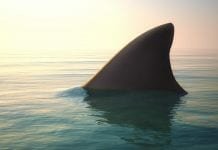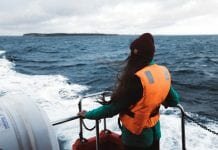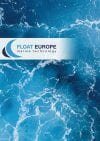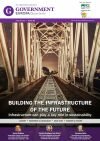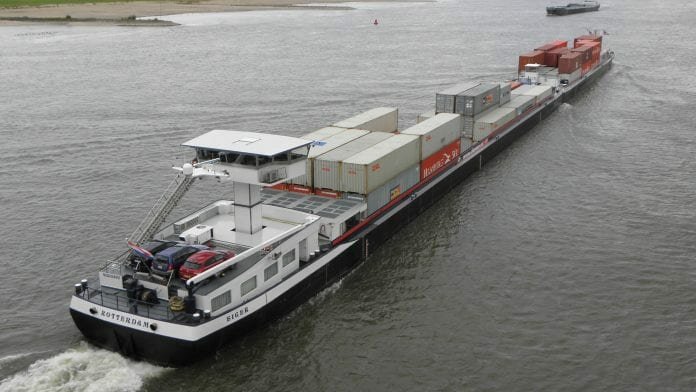
CoVadem is a low barrier opex service which enables inland shipping to reduce climate emissions, while increasing business margins.
In Northwestern Europe, inland waterway transport (IWT) is silently taking care of over 550 million tonnes of cargo every year; making the inland shipping sector an import pillar of our economy. Not many of us are aware of this niche market, which provides vital support in handling our transport demands and protects our ever busier road infrastructure from a total standstill. This unseen but vital mode of transport is not only climate friendly by nature, but also has room to grow and provide further opportunities to support the achievement of significant climate goals.
Europe is missing out on both business value and potential climate impact reductions every day. The importance of agriculture, aviation and deep sea shipping is well known across the general public; however, what is less known is the importance of inland shipping, which plays an equally important role in continental transport networks. In the same way, we are generally aware of the importance of adequate weather information for agriculture, aviation and deep sea shipping. We all experience the relevance of up to date traffic information for our roadbound logistics and traffic. However, equally important is the availability of adequate river information for clean and efficient inland shipping. Weather information and traffic information exists in many forms. Adequate information on river depths, however, does not exist.
Inland shipping is missing out on cargo revenue and structural climate benefits
Every single voyage, inland ships are missing cargo revenue, accepting unnecessary risks, excessive fuel consumption and climate impact. The reality is that all of these aspects are heavily influenced by the available water depths over the trajectory, varying constantly over time and trajectory.
Adequate water depths information dictates risk and cargo capacity; along a vessel’s route, available water depths are highly variable. Modern vessels have a maximum design capacity that is in almost all conditions higher than the actual capacity allowed by a trajectory’s shallowest passage. The current procedure is for the vessel owner to gather information from a variety of resources and make his own best estimate of available depth to decide on the cargo capacity. To assure safe passage, and to calculate for misinterpretation, a vessel owner is prevented from a factual optimisation of cargo capacity and cargo revenue.
Moreover, adequate information on water depths dictates operational efficiency. At any given speed, an inland shipping vessel experiences additional friction as a function of the vicinity of the riverbed and sees an exponential increase of energy consumption when under-keel clearance is reduced. As the depth of the river is highly variable over any given trajectory, building an operational performance history, relating vessel performance to the relevant fairway conditions can be used to effectively support improved operational efficiency, while maintaining or improving transport reliability.
Comprehensive water depth data remains largely absent, however, leaving the vessel operator depending on gut feeling and interpretations heavily subject to misinterpretation. Reliable performance metrics of river borne transport, relating vessel characteristics to both voyage and fairway conditions, are generally unavailable. Last but not least, climate change is driving volatility in river conditions making traditional interpretation methods even less reliable.
The data is available; it is just not being used
Water depth information for rivers is not available. At the same time, every vessel has a depth sensor, providing a display value about every second – for the combined fleet, that is over one billion measurements each day; but these values are not being stored or combined. As a vessel owner, a depth sounding device only provides restricted relevance; whenever it displays a restricting depth, the vessel is already there, leaving no time to anticipate. Ideally, a vessel owner would be enabled to look through the eyes of a vessel just sailing ahead, as this provides time and information to make good use of the information.
This is where the innovation of CoVadem comes in. As a spinoff of a collaborative research and development initiative headed by two major Dutch Research Institutes (MARIN and Deltares) that ran from 2012 to 2018, CoVadem Services BV introduces a smart technology using vessel sourced data. CoVadem harvests the onboard measurements and collects them in a dedicated cloud-based server and processing infrastructure. Here, CoVadem translates them to relevant indicators being provided as a subscription-based service (SaaS) for all vessel owners.
Big data technology and smart data collection devices
By deploying state of the art big data technologies and intelligent data connections with advanced river morphology, meteorological and vessel hydrodynamics modelling, CoVadem needs only a fraction of the fleet to establish a more than relevant service for all vessels. As its focus currently lies on the Rhine corridor, CoVadem aims to increase its present fleet of around 80 vessels to 300 measuring vessels and provide a service for all Rhine operating companies. Besides scaling up the fleet of connected vessels, CoVadem is rapidly developing its service portfolio, enabling access to the requested insights both through a device independent online platform and through implementation of a data integration with all navigation software providers relevant for inland shipping navigation.
As to be able to provide an off the shelf solution for secure onboard data collection and transmission, CoVadem developed a universal data collection device: the CoVadem Box. Once installed, the CoVadem Box ensures fully autonomous operation, can be remotely managed and requires no manual interaction by the vessel owner.
Data ownership policy
In spite of modern day tech companies generally making strong claims over the ownership of data provided by their clients, CoVadem introduces a simple and client friendly data policy: the participant remains in full ownership of their data. Data related to an individual vessel is only made available for insights for the data owner, unless the owner agrees to (temporarily) share (parts of) their data with specific others. CoVadem will then enable the data owner to securely arrange this. This introduces a new micro-business model for the CoVadem client. To enable CoVadem to operate their business model, clients do have to consent that CoVadem has the freedom to exploit its services by using the anonymised vessels’ water depths measurements.
Moreover, the availability of real time water depth information would enable vessel operators to increase their business margins in two ways:
- It allows for the reduction of grounding risk, whilst optimising cargo capacity (cargo revenue); and
- It allows vessel operations to carefully schedule a voyage, optimising the optimal energy settings.
For a typical Rhine vessel, increasing cargo capacity by 2% and a reduction of fuel consumption up to 10% will easily increase business margins by €25,000 per year. Europe counts over 12,500 inland vessels, of which over 7,500 actively navigating the Rhine. Given the fact that typical fuel consumption is directly linked to the emission of CO2, this will enable a yearly reduction of CO2 by 0.6MT by the combined fleet.
Performance metrics
Whilst the provision of real time and forecast water depth is instrumental in terms of achieving operational optimisation, the realisation of a reliable system for operational metrics is critical to enable continuous improvement and sustainable progress. Traditionally, inland shipping expertise is depends predominantly on human expertise and thus on the highly varying personal qualifications of the people involved.
The introduction of adequate performance metrics, relating vessel performance to fairway and voyage conditions, will enable smart progress; and optimal operational and innovation results can be achieved using the expertise now stored in the CoVadem system.
CoVadem is all about upscaling its current operational fleet and services. If your business or ambition relates to inland shipping, you should not miss out on a chance to join CoVadem in its introduction phase. To join the fleet as a measuring vessel is free of charge; and CoVadem offers discounted fees for the services. Tailored dashboard services can be realised. If your business is IWT or river-related, CoVadem is available to discuss synergy potential; because climate impact and business value can go hand-in-hand.
CoVadem Services BV
+31(0)88 2682300


